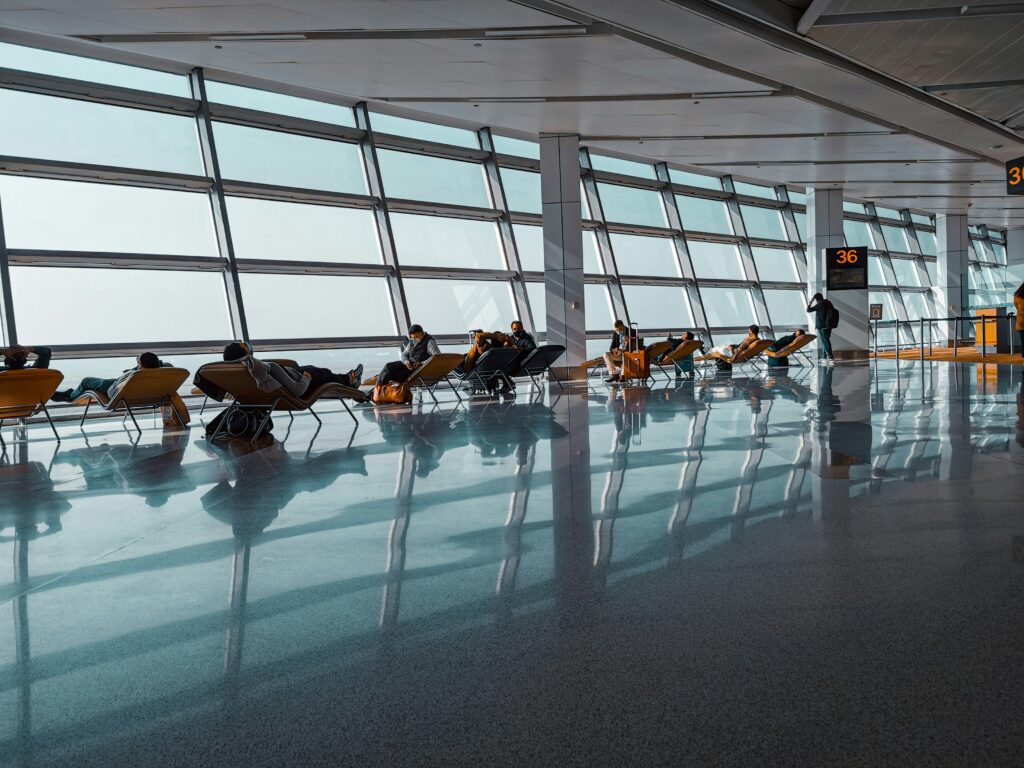Flying is one of the fastest ways to reach your intended destination. However, air travel comes with regulations to ensure safety, security, and a smooth experience. Familiarizing yourself with these rules can improve your travel experience while helping you comply with the necessary guidelines. Below is a comprehensive guide to the different types of restrictions you may encounter at airports worldwide.
1. Security Screening Procedures
1.1. X-ray Screening
- Purpose: Hand baggage is screened to detect prohibited items such as weapons or explosives.
- Procedure: Passengers place their luggage on the belt and remove laptops, tablets, and liquids for separate checks.
Tip: Use a TSA-approved bag for liquids to avoid complications.
1.2. Metal Detectors
- Process: Passengers pass through metal detectors, which alert when metal objects are detected.
- Follow-up: Alarms may lead to additional searches, including frisk searches. Advanced imaging technology is often used to enhance security without infringing on privacy.
1.3. Pat-Down and Secondary Screening
- Selection: Random checks or triggered alarms may result in detailed examinations. Security personnel are trained to conduct these politely and respectfully.
2. Baggage Restrictions
2.1. Carry-on Luggage Limits
- Size and Weight: Most airlines allow carry-ons up to 22 inches x 14 inches x 9 inches (56 cm x 36 cm x 23 cm) and a weight limit of 15–20 lbs (7–9 kg). Exceeding these limits may require checking your bag, which could incur extra costs.
2.2. Checked Baggage Limits
- Standard Allowances: Checked baggage is usually free up to 50 lbs (23 kg). Overweight luggage incurs additional charges.
- Fragile Items: Ensure fragile items are securely packed and clearly labeled.
2.3. Prohibited Items
- Restricted Items: Items like knives, lighter fluid, and explosives are banned.
- Guidance: Refer to your airline’s website or check TSA rules for a detailed list of prohibited items.
3. Health and Safety Protocols
3.1. Health Declarations
- Requirements: Passengers may need to fill out health declaration forms, especially during health emergencies or epidemics.
3.2. Face Masks and PPE
- Regulations: Face masks are mandatory in airports and on flights to reduce infection risks.
3.3. Temperature Checks
- Implementation: Some airports conduct temperature screenings. Passengers with elevated temperatures may undergo further health assessments.
4. Travel Document Requirements
4.1. Passport Validity
- Key Rule: Many countries require a passport valid for at least six months beyond your travel dates. Check the requirements of your destination in advance.
4.2. Visa Requirements
- Research: Visa requirements vary by country. Ensure you meet the necessary criteria before travel.
4.3. Boarding Pass Verification
- Procedure: Boarding passes must be shown at security checkpoints and before boarding. Many airlines offer mobile boarding passes.
5. Behavioral Expectations
5.1. Respectful Conduct
- Code of Conduct: Passengers should behave appropriately with staff and fellow travelers. Misconduct may result in ejection from the terminal or aircraft.
5.2. Compliance with Instructions
- Following Directions: Cooperate with airport staff and security personnel to ensure a safe and efficient travel experience.
6. Accessibility Regulations
6.1. Accessibility for Persons with Disabilities
- Mandatory Compliance: Airports provide facilities such as ramps, lifts, and accessible restrooms for passengers with disabilities.
6.2. Notification in Advance
- Advance Notice: Notify your airline at least 48 hours before your flight if you need assistance, ensuring prior arrangements are made.
7. Food and Beverage Restrictions
7.1. Liquid Restrictions
- Regulations: Liquids in carry-ons must be in containers of 3.4 ounces (100 ml) or less and placed in a single, clear, quart-sized plastic bag.
7.2. Solid Foods
- Rules: Most solid foods are allowed, but check agricultural restrictions for your destination.
8. Customs Regulations
8.1. Duty-Free Allowances
- Limits: Every country has limits on duty-free items like alcohol and tobacco. Check your destination’s rules.
8.2. Declaring Goods
- Legal Requirement: Declare goods exceeding duty-free limits or risk fines or confiscation. This includes gifts and items purchased abroad.
By understanding these crucial aspects of air travel, you can reduce stress and ensure a smoother journey. Always consult your airline or relevant authorities for the most accurate and up-to-date information.


This guide offers an excellent resource for travelers, especially those unfamiliar with airport protocols. Its structured approach makes navigating complex regulations manageable. The practical tips, such as using TSA-approved bags and checking airline-specific baggage policies, are particularly helpful. Additionally, the focus on respectful behavior and health protocols highlights the importance of fostering a cooperative and safe travel environment. This piece is an essential read for ensuring a hassle-free airport experience.
This guide offers an excellent resource for travelers, especially those unfamiliar with airport protocols. Its structured approach makes navigating complex regulations manageable. The practical tips, such as using TSA-approved bags and checking airline-specific baggage policies, are particularly helpful. Additionally, the focus on respectful behavior and health protocols highlights the importance of fostering a cooperative and safe travel environment. This piece is an essential read for ensuring a hassle-free airport experience..